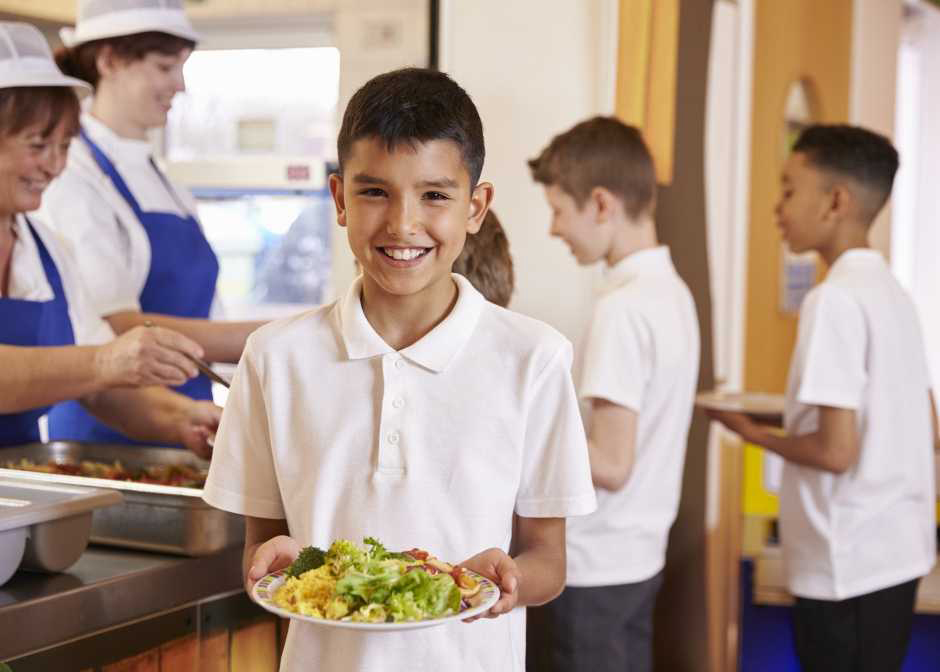SOMOS Community Care works with parents and community-based organizations, so every child has the opportunity to grow up healthy and active. September is National Childhood Obesity Awareness Month, which is a good moment to remember that childhood obesity is a serious public health problem that about one in five children (19%) in the U.S. faces.
Obesity puts kids at a higher risk of having many serious health conditions, including asthma, sleep apnea, bone, and joint problems, and type 2 diabetes. Obese children may also have high blood pressure and high cholesterol, putting them at risk for heart disease. In addition to these issues, overweight children may face bullying, which can lead to social isolation, depression, and lower self-esteem.
In these pandemic times, the problem exacerbates due to the anxiety that isolation and uncertainty create in children. Since March, SOMOS Community Care has been testing thousands of New Yorkers for COVID-19. We have witnessed very closely the effects that this virus has at all levels in society, especially in children who have suffered the consequences on a deeper level because of the lack of interaction with classmates, teachers, family, and friends. For those who have access to a computer and internet, their social time has been reduced to a screen, but it is even worse for those kids without access to technology.
The isolation, the disruption of their routine, and the emotions that they absorb from their parents and tutors, such as frustration or concern, build upon anxiety, which many times triggers compulsive eating.
How can you help prevent unhealthy eating habits in your child during these challenging times? Here are some tips to support healthy growth.
- Create a routine to provide them with the structure to feel safe. Developing the main meal and a snack schedule will help them to learn to eat regularly and decrease anxiety.
- Be aware of your emotions as parents. Emotions such as concern, frustration, or depression affect kids that may not understand the source of all, nor when these negatives feelings will end. If you want to make them feel better, you need to help yourself first.
- Monitor your child’s growth – Learn more about childhood obesity and use this Body Mass Index (BMI) Percentile calculator to assess your child’s risks with your doctor.
- Hydrate with water – Drinking water can help manage your child’s body weight and reduce caloric intake. Limit sugary beverages and juices and offer them water as a no-calorie alternative.
- Snack on fruits and vegetables – Fruits and vegetables are a nutritious, low-calorie option to provide your child as snacks instead of chips or candy.
- Be active and healthy! You are the best role model for your child. Plan family time around a physical activity like a neighborhood walk or playing frisbee in the park when possible and always following the protocols for COVID-19. At home, prepare healthy meals for the whole family to enjoy together.
Childhood obesity is a complicated problem, but we can all help be part of the solution. Even small steps like the ones listed above can go a long way in helping to keep your child healthy and active. Now, when most children are at home sharing time with their parents, it is a great time to talk about healthy eating habits and incorporate them into your child’s lifestyle.
Children need a balanced diet with food from all three food groups – vegetables and fruit, whole grain products, and protein foods. Eating a variety of foods keeps our meals interesting and flavorful. It is also a key to a healthy diet because each food has a unique mix of nutrients – both macronutrients (carbohydrate, protein, and fat) and micronutrients (vitamins and minerals).
According to the 2015-2020 Dietary Guidelines for Americans, here are some tips on the best formula to fuel your child’s growth and development:
- Vegetables: The more veggies – and the greater the variety – the better. Serve a variety of fresh, canned, frozen, or dried vegetables and aim to switch up the type of veggie, including dark green, red and orange, beans and peas, starchy and others, each week. Rinse the canned vegetables before you serve.
- Fruits: Eat your way around the rainbow! That means, eat plenty of fruits of all colors, whether fresh, frozen or dried.
- Whole Grains: Go for whole grains, such as whole-wheat bread, oatmeal, quinoa, or brown or wild rice, or foods made with minimally processed whole grains. Limit refined grains such as white bread, pasta, and rice.
- Healthy Protein: Choose beans and peas, nuts, seeds, and other plant-based healthy protein options, as well as fish, eggs, and poultry. Limit consumption of red meat (beef, pork, lamb) and avoid processed meats (bacon, deli meats, hot dogs, and sausages).
- Dairy: Encourage your child to eat and drink fat-free or low-fat dairy products, such as milk, yogurt, cheese, or fortified soy beverages.
- Healthy Oils: It’s important to remember that fat is a necessary part of our diet, and what matters most is the type of fat we eat. We should regularly choose foods with healthy unsaturated fats (such as fish, nuts, seeds, and healthy oils from plants like extra virgin olive oil, canola, corn, sunflower, and peanut oil in cooking, on salads and veggies).
- Water: Stay hydrated! Water should be the drink of choice with every meal and snack, as well as when we are active. Limit your child’s consumption of juice-which can have as much sugar as soda-to one small glass per day, and avoid sugary drinks like sodas, fruit drinks, and sports drinks.
Get your children involved in planning meals and preparing food, and be sure to check out our DASH Nutrition page for more easy-to-follow tips on healthy living!

